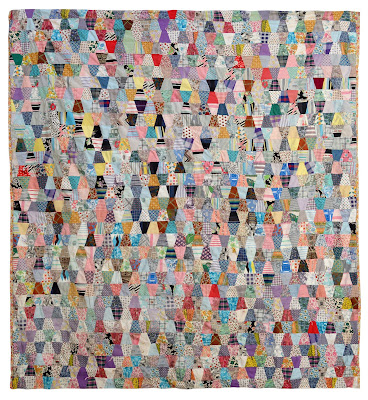 |
| There was a shirtless selfie circulating last week. |
"Wow, I'm thin now."
It was a random slice of life, a shot grabbed in a goofy moment. I was holding up a recently acquired Hawaiian scrap quilt, and my new body was showing. It was there in the mirror each day, but looking at a photo was something else. I thought, "Wow, I'm thin now."
The quilt is made out of Hawaiian fabrics, using an interlocking design that seems to be a variation of the pinwheel block. It is 44" x 54" and came from an eBay seller in Eureka, California. There is no batting or quilting, but it is backed, and the backing material is brought to the front for binding.
Lovely as it is, it will always be the quilt in the shirtless selfie, the end of a long journey, the rebooted body. If you want to lose a lot of weight, it makes a difference to pay attention to what you eat. Butter, for example. I love butter as much as anyone else, but it was probably a good idea to stop snacking on whole sticks of it in the form of shortbread and cheese straws.
Last night was a rare butter treat, garlic bread! It went well with the tomato based shrimp and scallop creole, instead of the usual white rice. Mom's garlic bread recipe is a compound butter. It has room-temperature butter, garlic, parmesan and parsley. I like to add other herbs, last night it was oregano and thyme. After unexpectedly dipping under my goal weight last week, it was nice to indulge is a hot, hearty meal. Wish I could eat like that every day, but at the same time, I'm glad I can't.













